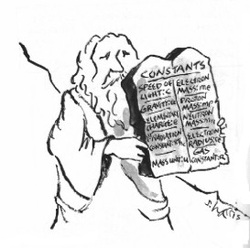 We don't know what a neutrino looks like, we just know a little bit about what it does. A neutrino leaves the Sun along with countless zillions of other neutrinos and a lot of photons. Unlike the photons, which interact with matter and get reflected or absorbed by it, the neutrino passes straight through - most of the time. Occasionally one of the countless zillions collides with an electron and explodes (annihilates). This is what neutrino experiments like this one at Super-K are set up to detect. Neutrinos are thought to be the oldest particles in the Universe and nobody knows what their world-line (lifetime) is. They move in straight lines according to our interpretations but while they are moving they are also spinning, and while they're spinning they're also oscillating - that is, they're changing from one form to another as they fly. These different forms - electron (not to be confused with electrons), muon and tau are the ones currently identified - all have different masses, and thus different properties, so it's quite incredible (and very much not understood) that they can morph so dramatically in this way.  Neutrinos travel at the speed of light; at least, that's what physicists say, despite the fact that some experiments have suggested they could even exceed light-speed, because light-speed is supposed to be a constant. A constant is something that must always be so, in science. There's no room for manipulating a constant or bending it a little where the need arises. Nature has a funny way of breaking what does not bend, a law which brought about the inevitable death of supersymmetry. Neutrinos may find themselves sweeping through constants in much the same way as they sweep through matter, unhindered and undeterred. And while we chase them with our very expensive pieces of kit, we might be missing a point. Neutrinos might be the particles connecting our conscience with that of the Sun. Whatever you personally believe, there was a time when every civilisation on Earth revered the Sun. All the great ancient monuments had the Sun squarely in focus. All the religions which give themselves festivals have chosen dates of importance on the solar calendar. And if we now believe that we have grown out of sun-worshipping and grown up in the process, it's a sobering thought that what we seem to be worshipping instead are the minted coins which came originally from loving the Sun's image and replicating it in gold. I think I'll just leave it there for now and see what others have to say.
0 Comments
Leave a Reply. |
AuthorKathy is the author of Quantumology. She met up with quantum mechanics in 1997, pledging allegiance to its sources thereafter. These are her personal thoughts and testimonies. Archives
April 2023
|

 RSS Feed
RSS Feed